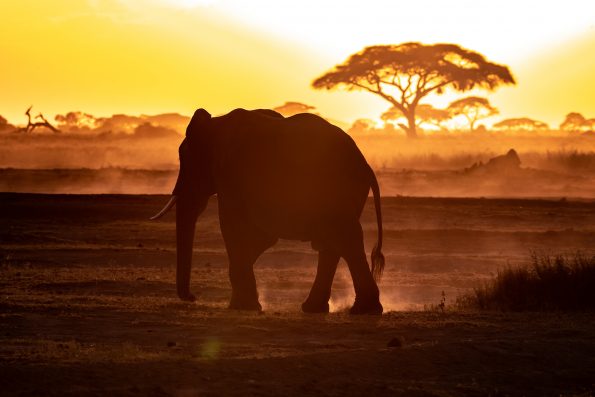
The first elephant to rise to fame was Jumbo, a male African elephant owned by P.T. Barnum. During the 1800s, he was the largest known elephant around.
At the height of his popularity, Jumbo died tragically after being hit by a train in Canada. His death sparked a number of conspiracy theories, such as that his death was engineered due to his declining health. So, what really happened to Jumbo?
When Jumbo was young, he was captured by hunters who killed his mother. In 1860, he was sold to the London Zoo when he was four years old.
While there, he lived in a small stable and gave rides to children. In 1882, he was sold to circus showman P.T. Barnum and sent to New York City at age 21.
Jumbo was advertised as the largest elephant in the world. Barnum claimed that he stood over 12 feet tall and refused to let anyone take photographs of the elephant so no one could get the chance to question Jumbo’s real size. Over his lifetime, an estimated 20 million people came to visit him.
In September 1885, Jumbo arrived in St. Thomas, Ontario. After the show, he was being loaded into a boxcar with a smaller elephant named Tom Thumb when an unscheduled freight train came barreling down the track toward them. Tom Thumb survived the impact, but Jumbo died from his injuries.
Legend has it that Jumbo was trying to run away from the train but was unable to escape the track. Another version of the event states that Jumbo was purposely led toward the train and that his death was staged because Barnum wanted to avoid any accusations of animal cruelty since Jumbo was in poor health.
Jumbo was such an icon that his skeleton was preserved and displayed at Tufts University in 1889, where he became the school’s mascot.
More than a century later, a team of researchers examined Jumbo’s skeleton for answers. They found that Jumbo wasn’t as large as Barnum claimed, but he was still 20 percent bigger than the average height of elephants in his age group.

The team also took samples from Jumbo’s bones and hair from his tail. They discovered that his diet consisted of grasses, hay, and oats, which wasn’t the best for him in terms of dental health.
Elephants require twigs, leaves, and bark to chew on. It helps grind down their teeth, making room for new molars.
Jumbo’s soft diet did not allow his teeth to wear down, so when a new set tried to emerge, it caused painful deformities.
The researchers looked into the conspiracy theories as well. They found a photograph of Jumbo that was taken right after his death. There were a series of abrasions on his hindquarters that proved he was hit by a train.
In 1975, a fire destroyed the building in which Jumbo’s skeleton was housed. The next day, a member of the athletics department at Tufts salvaged Jumbo’s ashes from the site.
To this day, the elephant’s remains continue to serve as a good luck charm for students on campus.
Sign up for Chip Chick’s newsletter and get stories like this delivered to your inbox.












